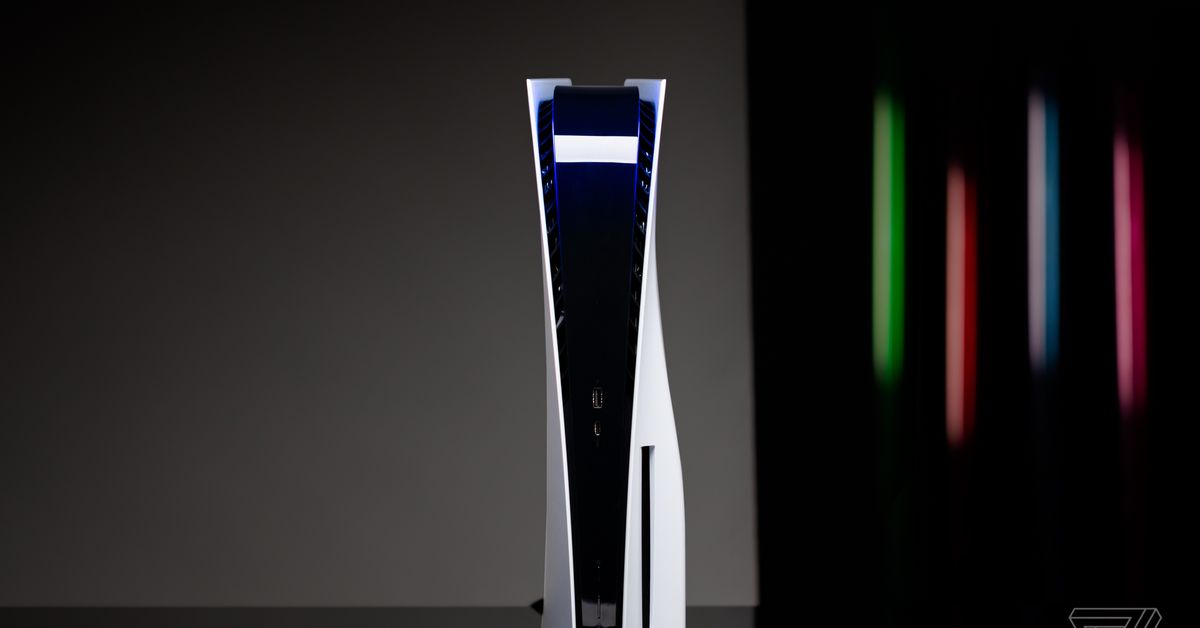Intel Arc A750 and A770 review: new budget PC gaming contenders
Intel’s GPU effort is impressive but early Continue reading…
/cdn.vox-cdn.com/uploads/chorus_asset/file/24069467/226320_Intel_Arc_A770_twarren_0007.jpg)
Intel’s Arc graphics cards are finally here, and they’re priced to take on Nvidia’s popular RTX 3060 for budget PC gamers. Starting at $289, there’s the Arc A750 for some 1080p gaming, or you can step up to the $329 A770 if you want a little extra power for 1440p gaming. These are impressive prices as long as Intel can actually keep them this low. If it can, then pricing will really be the whole story of Intel’s Arc push.
Intel isn’t attempting to take on Nvidia or AMD’s top-end cards. Instead, it’s aiming at the mainstream PC gamers who are looking for graphics cards that are capable of great 1080p or 1440p gaming. And with 1080p gaming still the most popular resolution by far on PC, it’s a huge market for Intel to tackle. The Arc A750 undercuts Nvidia’s RTX 3060 $329 retail pricing by $40, and Intel’s A770 matches it head-on.
In my week of testing both cards, the A750 proved capable of a solid 1080p experience, and the A770 just about stretches that same experience to 1440p. These graphics cards aren’t perfect, though. Intel has been doing integrated graphics for laptops for years, but it’s very clear it’s early days for its dedicated PC gaming GPUs. The drivers are very basic compared to AMD or Nvidia, there have been a few bugs here and there, and some game developers are going to have to tweak their games to support Intel’s new GPUs.
But Intel has finally gotten Arc out the door after months of delays, and for budget gamers, the result is impressive.
The Arc A750 and A770 have a very similar design, and all that separates them visually is a strip of LEDs that’s only available on the $349 limited edition A770 16GB. Both have a slick matte finish that barely picks up fingerprints and seems to be good at keeping dust at bay, too. These cards look great in a case with a side panel, and I think they’re just as visually appealing as Nvidia’s Founders Edition cards.
Test machine:
At the rear, there are three DisplayPorts and a single HDMI port. You can even use HDMI 2.1 with the full 48Gbps rate by using a DisplayPort to HDMI cable. Intel has integrated PCONs that will convert DisplayPort to HDMI 2.1 on its own Arc cards here, but it will be up to third-party vendors whether they support similar integrations.
Intel is using two axial fans and a large copper vapor chamber on these Arc GPUs to keep them running cool, and their slimline build means they don’t take up much room in a case. You’ll need to connect up both a six-pin and an eight-pin PCIe power connector to the side, and playing Cyberpunk 2077 with ray tracing enabled at 1440p used a total of 438 watts system power at peak for an A770 paired with Intel’s 12900K CPU. The A750 peaked at 369 watts during the same test. Both have a total board power rating of 225 watts.
The $349 limited edition A770 16GB.
If you want to fully control the A770’s RGB light pattern, you’ll need to connect up a separate cable to a USB 2.0 header on your motherboard. It’s a rather inelegant solution considering most card manufacturers offer this control without a separate cable.
There will also be cards from board partners, although at the time of writing, we’re still not sure exactly what these will look like or how they’ll be priced compared to Intel’s own limited edition Arc cards. I’m truly hoping that the $289 pricing of the A750 holds, but as we’ve seen with the $329 list pricing of the RTX 3060, that’s not always the case.
Benchmarks
Nvidia’s RTX 3060 is the closest competitor to both of these cards, regardless of the varying price points and memory configurations. I’ve been testing an 8GB Arc A750 and the 16GB A770 over the past week, pitting them against the RTX 3060 Ti Founders Edition. Unfortunately, due to a tight review embargo and not having immediate access to an RTX 3060, I haven’t been able to compare directly to Nvidia’s $329 budget card, but I think you’ll see from the numbers that these cards are going to comfortably trade blows with an RTX 3060, even if they can’t quite stretch to match the $399 RTX 3060 Ti in most games.
I’ve been testing a variety of games across both 1080p and 1440p and even Intel’s new XeSS competitor to Nvidia’s DLSS. The results are solid for both cards at 1080p, with the majority of games running at 60fps or far beyond with ultra or high settings enabled. At 1440p, the Arc A750 can’t always deliver beyond 60fps, particularly when ray tracing is enabled.
If you’re interested in 1440p and can stretch the extra $40, I’d recommend the A770. It simply delivers that extra bit of performance that keeps things a lot more comfortable if you want to keep the settings cranked up to ultra. Otherwise, you’re gonna need to adjust the detail settings at 1440p on the Arc A750.
Intel’s Arc GPUs really perform best in DirectX 12 or Vulkan titles with resizable BAR enabled. Most modern games support DirectX 12 or have a beta version of support, and we use a mix of games in our benchmarks that just happen to lean more heavily toward DirectX 12. If you’re playing a lot of older DirectX 11 games, then it’s definitely worth looking around at other reviews that compare some of these older titles on Arc GPUs.
As you can see from our benchmarks, the Arc A750 struggles with ray tracing on Hitman 3, Cyberpunk 2077, and Watch Dogs: Legion. Intel has XeSS to help here, but the only one of those games that supports XeSS is Hitman 3. It helps lift frame rates by nearly 10fps while maintaining visual quality. But you’re still going to need to drop settings if you want to use ray tracing here. I think ray tracing is still more of a high-end GPU thing, so it’s not surprising to see the Arc A750 struggle more here.
I tested XeSS in Shadow of the Tomb Raider across both cards, and I found that it didn’t have as much impact on performance as Nvidia’s DLSS did in the same game. The Arc A770 jumps nearly 9 percent with XeSS quality enabled at 1440p, but the RTX 3060 Ti manages a far bigger 24 percent increase during the same test. DLSS manages to produce better results for Hitman 3, too. Enabling performance or balance will have more of an impact, but then you’re losing the visual quality, and I’ve often found DLSS quality is a good balance of maintaining visuals and boosting performance.
The biggest problem for XeSS right now is that there just aren’t enough games that support it yet. That could change in the coming months, but for now, Nvidia has an obvious lead here thanks to the amount of time it has been in the market and the 100-plus games that already support DLSS.
Intel is using two 15-blade fans on each Arc GPU.
Software and drivers
That amount of time in market also plays into the software and drivers situation on the Arc A750 and A770. The drivers and software are very basic right now, only allowing you to tweak some settings in games with an overlay app and look at performance data and frame rates. I’d like to see a lot more here, especially as AMD and Nvidia both offer superior customizability and features.
I also experienced a bunch of weird driver issues throughout my testing. Fortnite wouldn’t launch, so I initially chose not to benchmark it, and as I looked around for other first-person shooter options, I thought I’d give Valorant a go. That wouldn’t launch either. Intel issued a new driver to fix these issues, but these problems make me nervous given how broken the drivers were for Intel’s Arc A380. There are also signs that games will need to be updated to fully support Arc GPUs.
Every time I launch Control on an Nvidia GPU, it offers me the option for DirectX 11 or DirectX 12, but the Steam version of the game simply launched into DirectX 11 by default with the A750 and A770. Even if I launched the DirectX 12 exe, the game was still running in DirectX 11 mode. I managed to work around this by adding a launch variable to Control on Steam, but it was another reminder that there are some strange bugs here and there.
Intel’s driver controls are in an overlay.
Microsoft Flight Simulator also warns that my PC doesn’t meet the minimum requirements for the game every time I go to launch it on the A750 and A770. Flight Simulator runs fine, but it shows that games aren’t always ready to detect and fully support Intel’s new Arc GPUs. I’m confident other reviewers will have similar issues with other games that I haven’t managed to test, and I’m hopeful that Intel can respond quickly here. Intel said in August that it’s continuing to improve its drivers and “learn what it will take for us to be successful.”
Nvidia and AMD drivers often have some game bugs and issues that are fixed quickly, and Intel has been maintaining integrated drivers across a variety of laptops for decades, so it certainly has the expertise to improve things. I’m just a little wary of game compatibility for the launch period, especially as Intel’s driver work hasn’t traditionally been focused on the types of games its Arc lineup is now designed to power.
Intel’s XeSS shows some early signs of promise, but we’ll certainly be back to take a closer look at XeSS once there are more games that support it. I’m just glad there is another competitor to Nvidia’s DLSS because competition will make both companies keep pushing to win over gamers.
Intel’s Arc A770 is the better choice for 1440p.
Intel’s first two budget GPUs offer impressive performance for the 1080p crowd and even a boost for those willing to pick the more expensive A770 card and move to 1440p. Although I haven’t been able to directly compare these cards to an RTX 3060, I’m confident the A750 and A770 will trade blows here at an important budget level of the PC gaming market. They certainly don’t come close to a $399 RTX 3060 Ti, though.
If you’re thinking of buying an A750 or A770, I would just recommend reading every review possible. Intel’s Arc cards are so new that there will be some performance limitations for certain games and early driver issues. You’ll want to make sure your favorite game runs well before you consider going Intel in these early days.
I think Intel’s Arc cards are an exciting and much-needed entrant into the PC gaming space, I just hope Intel is in this for the long run. We’ve waited a long time to see what Intel can do, and the results will impress budget PC gamers looking for their next GPU.
Photography by Tom Warren / The Verge

 BigThink
BigThink 
































